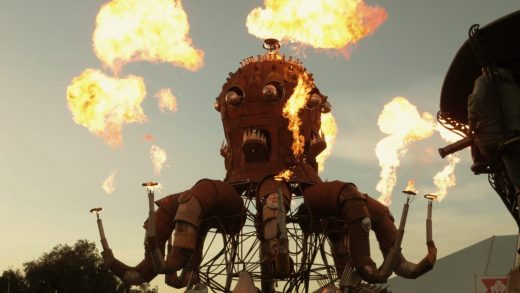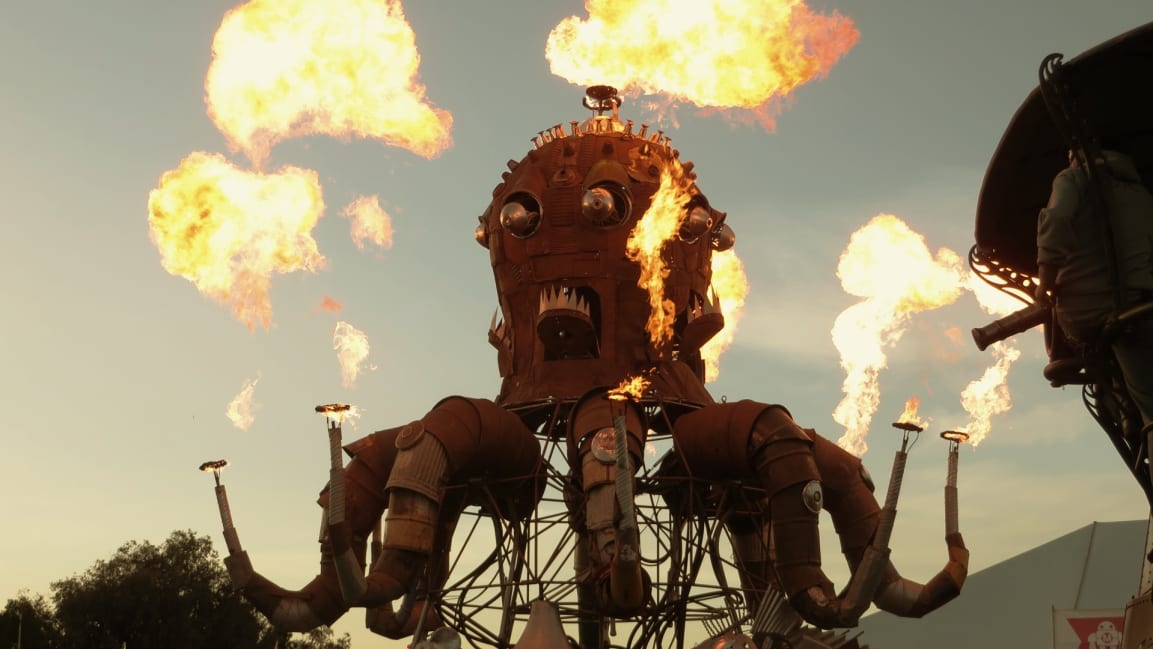We can’t make things where we used to
The Bay Area Maker Faire comes to the San Mateo Fairgrounds in Silicon Valley this weekend, bringing together a community of tinkerers and builders and the homemade projects that have defined the maker movement since it more or less officially began in the area in 2006. Over the years, one of the fair’s only consistent traits has been its adaptability to reflect the changes in technology and people’s passions, making it a fascinating barometer of innovation and creativity. And this year’s fair will look different too—in part due to how Silicon Valley itself is changing.
While Maker Faire was once largely dedicated to many types of making, including a celebration of large mechanical and analog productions, in recent years, the event has included more and more digital projects by software and small hardware-based makers.
Some of this shift is due to increased access to chip fabrication and tools such as Arduino and other small devices that enable hardware hacking. However, as I’ve found in eight years of researching Silicon Valley’s technology makers, this shift towards hardware and software also mirrors growing space constraints in cities like San Francisco that impact what people are physically able to make.
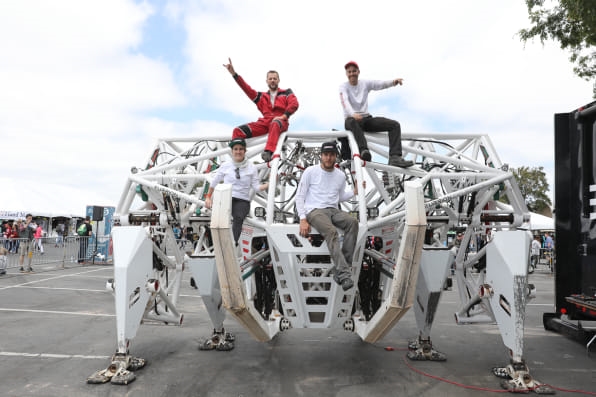
[Photo: Mark Fong courtesy of Maker Media]
While Silicon Valley itself grew from Stanford University and its relationship with the U.S. government and military research, some of its more recent history, such as the beginning of Hewlett-Packard and also of Apple Computer, Inc., began as inventions in garages. The garage in Silicon Valley symbolizes a particular kind of entrepreneurial spirit, where skies are blue and fields are green, and there is room for innovation and invention. For decades, Silicon Valley entrepreneurs have thrived on pushing boundaries, breaking rules, and “disrupting.”
Yet, for all of that energy and effort, the popularity of its own inventions had an effect on the Silicon Valley housing market, turning the land of entrepreneurial garages into a rule-bound, regulation-obsessed rental market. This is not necessarily a good match for the innovative, “disruptive,” and entrepreneurial mindset of many Silicon Valley inhabitants.
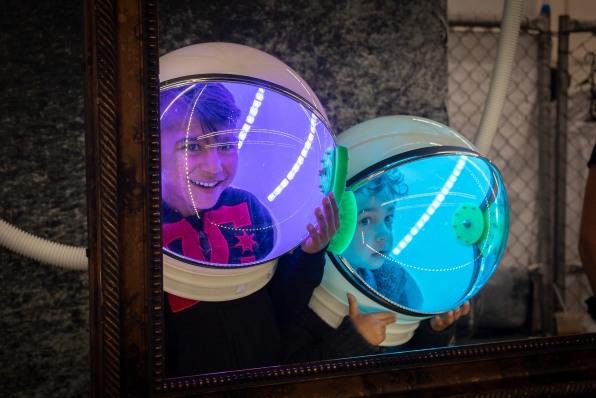
[Photo: Jun Shena, courtesy of Maker Media]
It is no wonder that so much software is created in Silicon Valley, for there are increasingly few spaces to create much else. Silicon Valley has grown and transformed dramatically and rapidly—along with the technology it has created. Many of the tools that enable the internet and mobile web, and nearly all of our communications, for business, government, entertainment, and to maintain our personal relationships, has been developed in Silicon Valley. To have a centralized location for an industry that has grown as fast as the technology sector has grown has required a plethora of people; many of us have relocated to Silicon Valley for technology industry jobs.
Rather rapidly, the reputation of Silicon Valley for fair weather, high salaries, and individual entrepreneurial spirit was disseminated over the internet to people looking for opportunity and change, and this likely further encouraged migration to the area. The large influx of people in a short timeframe, needing housing and office space—combined with a financial model of real estate as an investment vehicle, particularly for newly minted IPO millionaires and wealthy overseas investors—created the perfect storm of increasingly limited and expensive resources for housing and office space.
Even the less expensive spaces that are often found in cities and used for creation, such as warehouses and other commercial spaces, were eventually targeted by landlords and property managers courting venture capital funded startups and other hopeful businesses for use as boutique “loft” workspaces—with premium rents.
The responsibility for this shift is distributed between housing commissions, city planners, architects, land developers, venture capitalists, property management companies, low interest rates fostering real-estate investment, and the persistent influx of new workers. With the market getting tapped out, and the growth of the Silicon Valley workforce continuing, local cities rushed to cope with the need to house the workers that kept the valley in business. This spurred land developers to build as many “sustainable dense urban housing” (e.g. multistory, multiunit) apartment buildings as they could—and as fast as possible.
These shifts in space and housing in places like Silicon Valley and the Bay Area are changing and shaping human culture worldwide by affecting what, how, and where people are able to make. As part of my 2016 dissertation, “Disrupting Silicon Valley Dreams: Adaptations through Making, Being, and Branding,” I followed the maker movement from the launch of Make magazine in 2005 to the first Maker Faire in 2006 to the most recent Maker Faire in 2018. The event has inspired local (and remote) communities to make and create and has extended its reach into educational programs and support of programs through museums like the Exploratorium.
However, while making has been encouraged through Maker Faire and its outreach, the spaces where people can reasonably build larger projects seem to be diminishing in more dense urban areas—particularly those tech centers where real estate is at a premium.
A good example can be found in downtown Redwood City, California, formerly a sleepy civic center with mostly two- to three-story buildings. In Redwood City, developers built blocks of dense five- to seven-story apartment housing units in only a few short years, completely transforming the urban landscape and demographics.
These big apartment blocks cater to people who arrive for jobs in the Bay Area and need to start work immediately and are often advertised as being designed for Silicon Valley workers. They contain mostly one- to three-bedroom apartments, managed and maintained by property management companies, which implement and enforce rules that affect how people are allowed to live in their dwellings, such as how they may remodel (they cannot), what types of “improvements” they can make (few if any), and other regulations that are ostensibly for the good of all tenants.
Thus, Silicon Valley workers who rent (and many do) or own condominiums live within restricted boundaries. The units are basic and often standardized, with partial hard flooring (synthetic hardwood, tile, or synthetic flooring) in a kitchen area and mostly beige carpet throughout. Walls are white. Sometimes windows do not open, leaving occupants to rely on air-conditioning and heating units to control temperature. These “amenities” limit certain types of making. If windows cannot open, then fumes cannot be vented or can drift into neighbor’s spaces. If walls are white and carpet is a light color, there is a higher degree of care needed to “protect” the space and thus, dwellings cannot easily be modified or used as workshops.
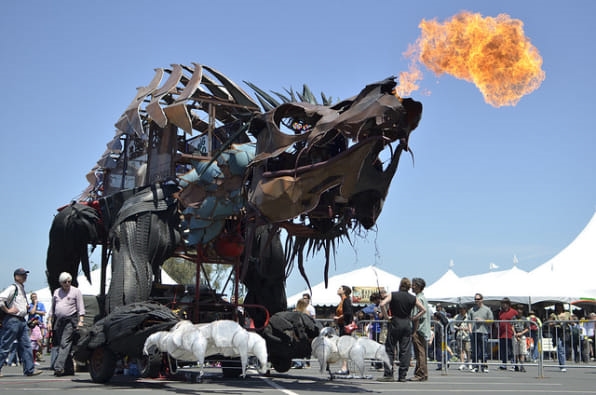
[Photo: Flickr user SparkFun Electronics]
Shared space for making or using larger machining tools is also limited. Many of these dwellings only provide large underground garage spaces that are similar to the vast garages found underneath urban office buildings. These garages are not able to be used as workspaces either, due to space, light, noise, and ventilation issues, along with the terms of occupancy that are part of rental leases and property agreements. These restrictions limit the making of larger material objects at home that require power tools, mechanical components, and paint. To keep things cleaner and within housing rules, makers may create smaller 3D-printed objects, as well as Arduino-driven devices, software and digital, or other handmade products .
The people who cannot afford the rapidly rising cost and dwindling inventory of affordable single-family homes and who live in these rule-restricted apartments or condos certainly have had to reduce their making—and those are the ones who can afford to live in town. Gentrification may displace people to areas where they may have more space to create, but in doing so, they are potentially removed from their colleagues and community of makers who collaborate with them on larger productions. One solution is for makers to relocate, which can be evidenced by Steampunk and Burning Man enthusiasts, artists, and participants moving to Vallejo, California, where warehouses and housing are available and far less expensive than in other parts of the Bay Area.
Another solution in dense urban areas has been to move making outside the home into makerspaces and hackerspaces, which are workshops where members can gather to build and collaborate on mechanical objects, software and hardware devices, or 3D-printed objects. Many makerspaces and hackerspaces grew in popularity alongside Maker Faire and as U.S. schools cut funding for shop classes and other places where young adults could traditionally learn handicrafts.
While sewing and scrapbooking and other smaller projects continued to be made in the home, the making that required power tools and space was dependent upon those willing to share their garages and equipment, or those who grouped together to share knowledge, resources, and real estate. These shared community type of spaces have surged in recent years: As of 2016, Popular Science reported, there were roughly 1,400 makerspaces worldwide, about 14 times more than there were in 2006.
Makerspaces and hackerspaces enable and in some cases teach people to weld, use CNC machines and laser cutters, and create robots or other motorized larger machines. They may also enable small business owners who need access to equipment or workshop space but cannot afford to buy or rent it. These spaces foster community building, as well, allowing people to share ideas and to cooperate with others on projects—with much more tool and space access than in their homes.
Amid rising rents, however, long-term sustainability for community makerspaces can prove difficult. TechShop, which launched in 2006 and spread to 10 makerspaces across the country, offered workspace, classes, and access to industrial machinery for its members. Unfortunately, the business was impossible to sustain without outside subsidies, as CEO Dan Woods said in 2017 when the company filed for bankruptcy. That left thousands of artists, tinkerers, and other inventors —some of whom depended upon making and selling their projects for their livelihoods—scrambling for other places to make.
Makerspaces have closed in Philadelphia, too, citing similar reasons as Woods mentioned. In the Bay Area, hackerspace Noisebridge is facing an expiring lease and is seeking to raise nearly $4 million dollars to rent or purchase a building in the area, giving them a new urban home they can control—or at least a chance at survival.
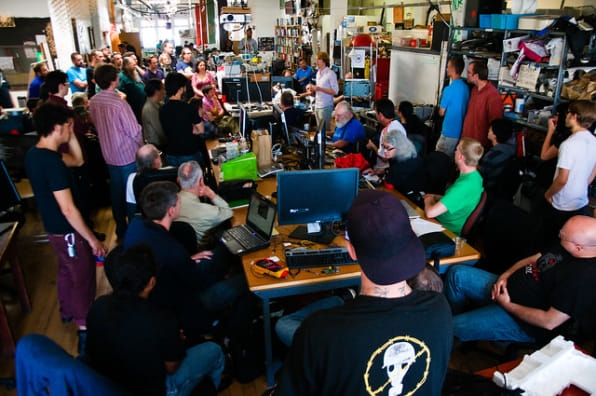
[Photo: Flickr user Mitch Altman]
Victoria Fierce, a Noisebridge member and housing organizer, told the San Francisco Examiner last month that renewing the lease would be “prohibitively more expensive” and that the collective’s growing membership also necessitates more room. The only major criteria for a new space is that it is located in San Francisco and close to public transportation. “This is a place where hackers from all over the world get off the plane at SFO and they show up at our door at 3 a.m.,” she told the paper. “We want to keep encouraging that and stick around.”
Another emergent trend for supporting more commercially focused making has been the private, often venture capital-funded “incubators,” that function like making spaces but with important differences and restrictions. It is competitive to be selected to be a part of an incubator space, and there are expectations that projects will become viable products in the marketplace. This model can work for the lucky few in Silicon Valley, but the restrictions on making with an eye towards profit can change the nature and spirit of material productions as well.
Access to adequate spaces for making can shape our contributions, creativity, creations, communities, and innovation. City planners, architects, and land developers must consider the outcomes of their housing projects and the impact that these designs and implementations have on our ability to create, innovate, and contribute to cultural change. Our physical environment can have much more shape and impact on what we are able to make and build—provided we have spaces to express ourselves.
Until then, Maker Faire will be showing us what we can make locally at home, what we can make when we work together, and what we can make when we leave town and have more space to stretch our minds and our projects.
S. A. Applin, PhD, is an anthropologist whose research explores the domains of human agency, algorithms, AI, and automation in the context of social systems and sociability. You can find more at @anthropunk and PoSR.org.
(21)

